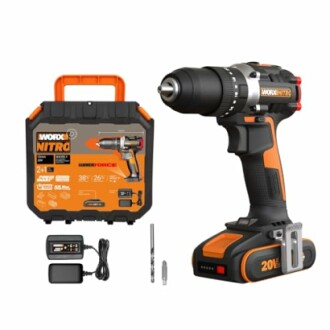
How to Use a Cordless Drill for Home Repairs
Key Takeaways
- Understand the different functions of your cordless drill.
- Choose the right drill bits for various tasks.
- Learn safety tips for using your cordless drill.
- Master basic techniques for common repairs such as hanging shelves, assembling furniture, and more.
- Utilize your drill for a variety of home improvement projects.
Using a cordless drill can make your home repairs quicker and more efficient. This guide will walk you through how to effectively use this versatile tool for common home upgrades and maintenance tasks. With a cordless drill, you can tackle various projects with ease, from assembling furniture to hanging shelves. Let's get started!
Understanding Your Cordless Drill
Before diving into specific tasks, it's essential to know the basic features and components of your cordless drill:
- Trigger: Controls the drill's speed.
- Chuck: The part that holds your drill bits; often self-tightening.
- Torque Settings: Adjusts how much force is applied to drive screws or bits.
- Battery: Energizes the tool; look for long-lasting batteries for extended work sessions.
Choosing the Right Drill Bits
Your cordless drill's versatility depends greatly on the drill bits you use. Below is a table of common drill bits and their uses:
| Drill Bit Type | Use |
|---|---|
| Twist Bits | General-purpose drilling in wood, plastic, and metal. |
| Spade Bits | For drilling larger holes in wood. |
| Hole Saws | Ideal for cutting large circles in wood and drywall. |
| Hex Shank Bits | For driving screws efficiently. |
Safety First
When using any power tool, safety is a top priority. Here are some essential safety tips:
- Always wear safety goggles to protect your eyes.
- Check for any loose wires before use.
- Ensure your workspace is clear of debris and hazards.
- Use the correct drill bit for the material you're working on.
Common Home Repairs Using a Cordless Drill
Now that you have a basic understanding of your cordless drill and safety precautions, let’s look at how to use it for specific home repairs:
1. Hanging Shelves
To hang a shelf, follow these steps:
- Determine the location and mark your drill holes with a pencil.
- Use a level to ensure the shelf will be straight.
- Drill pilot holes into the wall for your screws.
- Attach wall brackets using the cordless drill.
- Place your shelf onto the brackets and adjust as necessary.
2. Assembling Furniture
Many furniture pieces come with pre-drilled holes for easier assembly. To do this:
- Identify all necessary parts and tools based on the instructions.
- Align the parts according to the assembly guide.
- Use the cordless drill with the appropriate hex shank bit to assemble screws into the pre-drilled holes.
3. Installing Fixtures
Whether it’s door handles, light fixtures, or curtain rods, the cordless drill is essential in installing fixtures:
- Mark where the fixture will be installed.
- Drill holes for screws into the marked spots.
- Secure the fixture in place using the cordless drill to tighten screws.
WORX WX355.1 Cordless Brushless Combi Drill
A powerful and compact drill featuring a brushless motor for heavy-duty applications. Ideal for tight corners with adjustable torque settings.
Learn MoreAdditional Tips for Using a Cordless Drill
Beginner Tips
- Practice using your drill on scrap material before starting your project.
- Keep an extra set of batteries charged for prolonged tasks.
- Clean your drill and bits after usage for longevity.
Werktough OS06 Cordless Oscillating Multi Tool
A multitasking tool perfect for cutting, sanding, and scraping, ideal for all kinds of home repairs and improvements.
Learn MoreConclusion
Mastering the use of a cordless drill can greatly enhance your ability to perform a range of home repairs. This handy tool simplifies tasks while providing precision and efficiency. Follow this guide to ensure optimal results in your home improvement projects.
For more tips on using power tools, check out our How-To Guides section.
Pros
- Versatile for a wide range of home repairs.
- Lightweight and portable design.
- Easy to use for beginners.
Cons
- Battery limitations for prolonged use.
- Incorrect bit usage can lead to project failures.


